Indirect Sinus Lift
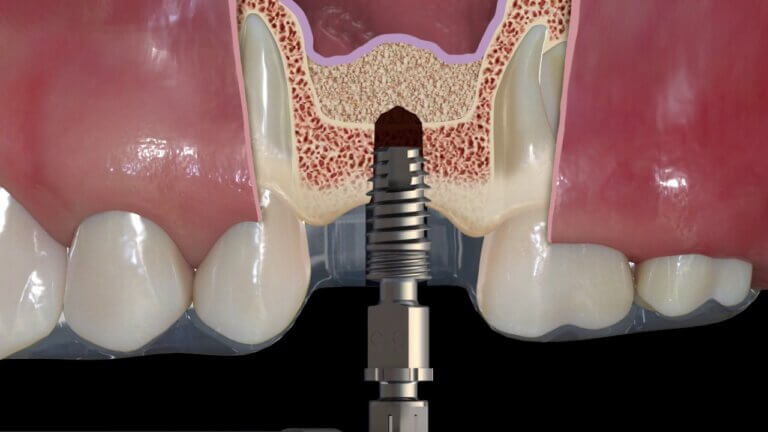
What Is Indirect Sinus Lift?
Indirect Sinus Lift, also known as subantral sinus augmentation, subcrestal augmentation, sinus floor elevation, or transcrestal approach, is a minimally invasive bone grafting procedure that aims to increase the amount of bone in the upper jaw by elevating the sinus membrane indirectly through the crestal ridge. This procedure is typically performed when there is not enough bone height under the maxillary sinus to support dental implants. Indirect sinus augmentation can often be done at the same time dental implants are placed, and will help create a stable and sufficient foundation for the dental implants, allowing patients to restore their ability to chew and speak with confidence.
Before you deciding on whether Indirect Sinus Lift are right for you, there are some things you should know:
- Who Needs Indirect Sinus Lift?
- What Are The Advantages Of Indirect Sinus Lift?
- What Are The Potential Risks Or Complications Of Indirect Sinus Lift?
- What Type of Bone Graft Materials Do You Use?
- How Much Does Indirect Sinus Lift Cost?
- What Are The Steps In The Indirect Sinus Lift Procedure?
- Can I Have Indirect Sinus Lift If I Am Pregnant?
- How Long Does Indirect Sinus Lift Last?
If you have any further questions about zirconia dental implants or other dental services offered at Atlas Dental, please contact us.

Free phone consultation
Have questions about Alveolar Bone Preservation? Schedule a free phone consultation with our Toronto dentist.

5 star google reviews
Our patients love us! See for yourself why more and more people are choosing Atlas Dental for Alveolar Bone Preservation.

Book In Person Consult Online
Book an in-person consult to discuss your Alveolar Bone Preservation case.
Who Needs Indirect Sinus Lift?
Indirect Sinus Lift may be recommended for patients who have:
- Insufficient bone height under the maxillary sinus: When there is not enough bone height in the posterior upper jaw to support dental implants, an Indirect Sinus Lift can help increase the amount of bone in the area to provide a stable foundation for implant placement.
- Missing posterior teeth for an extended period of time: When teeth are lost in the posterior upper molar area, the underlying bone may begin to resorb or shrink, leading to a decrease in bone height. This can make it difficult to place dental implants. Indirect Sinus Lifting can help to restore bone height and enable implant placement.
- Experienced trauma or injury to the upper jaw: Trauma or injury to the upper jaw can result in the loss of bone, making it difficult to place dental implants. Indirect Sinus Lifting can help to restore bone height and enable implant placement.
- Advanced gum disease: Gum disease can result in vertical bone loss in the upper jaw, leading to insufficient bone height for implant placement. Indirect Sinus Lifting can help to restore bone height and enable implant placement.
Overall, patients who require dental implants in the posterior upper jaw and have insufficient bone height for implant placement may be good candidates for Indirect Sinus Lifting. However, a thorough evaluation by a dental professional using CBCT scans is necessary to determine if this procedure is right for you. If you have further questions about Indirect Sinus Lift, please contact us.

What Are the Advantages of Indirect Sinus Lift?
Indirect Sinus Lift has several advantages, including:
- Minimally invasive: Indirect Sinus Lifting is a minimally invasive procedure that can be performed using a small incision and small bone drills without the need for a lateral window opening, making it less traumatic and reducing the risk of complications.
- Predictable outcomes: Indirect Sinus Lifting has a high success rate and predictable outcomes in terms of bone regeneration and implant placement.
- Shorter healing time: Since Indirect Sinus Lifting is minimally invasive, the healing time is generally shorter than with other types of sinus grafting procedures.
- Improved quality of life: Indirect Sinus Lifting can provide patients with the ability to chew and speak comfortably, improving their overall quality of life.
- Reduced need for additional procedures: Indirect Sinus Lifting can often be performed in conjunction with implant placement, reducing the need for additional procedures and minimizing treatment time.
The advantages of Indirect Sinus Lifting make it a popular choice for patients who require dental implants in the posterior upper jaw and have insufficient bone height for implant placement. However, as with any dental procedure, there are risks and potential complications that should be discussed with a dental professional. If you have further questions about the pros and cons of Indirect Sinus Lift, please contact us.
What Are the Potential Risks or Complications of Indirect Sinus Lift?
As with any surgical procedure, Indirect Sinus Lifting carries some risks and potential complications, including:
- Dental sinus infection: Infection is a possible risk associated with any surgical procedure, including Indirect Sinus Lifting. Antibiotics are typically prescribed to reduce the risk of infection.
- Bleeding: Bleeding is common after surgery, but excessive bleeding can lead to complications. Patients should avoid vigorous physical activity and follow post-operative instructions to minimize the risk of bleeding.
- Perforation of the sinus membrane: During Indirect Sinus Lifting, the sinus membrane may be inadvertently perforated, leading to complications such as sinusitis or implant failure. This risk can be minimized by using proper surgical techniques and careful patient selection.
- Graft failure: Although the success rate of Indirect Sinus Lifting is high, there is a small risk of graft failure. This can result in insufficient bone height for implant placement and may require additional procedures.
- Nerve damage: There is a small risk of nerve damage during Indirect Sinus Lifting, which can result in numbness or tingling in the upper jaw or teeth. This risk can be minimized with careful planning (including the use of a CBCT scan) by using proper surgical techniques and careful patient selection.
Overall, while Indirect Sinus Lifting is generally a safe and effective procedure, patients should be aware of the potential risks and complications associated with the procedure. Patients should consult with a dental professional to determine if Indirect Sinus Lifting is a suitable treatment option for their specific dental needs. If you have further questions about the potential risks of an Indirect Sinus Lift, please contact us.
What Type of Bone Graft Materials Do You Use?
There are different types of bone graft materials that can be used for an Indirect sinus lift. Here are some of the most common types:
- Allograft: This type of bone graft material is derived from human donors and is the most popular type of bone graft used. It is sterilized using high heat, pressures and temperatures to remove cells and minimize the risk of disease transmission. Allograft bone is a safe and effective option for alveolar bone preservation.
- Xenograft: This type of bone graft material is derived from animal sources, such as cow (bovine) or pig (porcine) bones. The animal bone is processed to remove cells and minimize the risk of disease transmission. Xenograft bone is also a safe and effective option for alveolar bone preservation.
- Autograft: This type of bone graft material is taken from the patient’s own body, usually from the hip or the jaw. It is considered the gold standard of bone grafting materials since it is the patient’s own tissue and has a lower risk of rejection. However, a second surgical site is required to harvest the bone and is often avoided when Allograft sources are available.
- Alloplasts. This deals with synthetic materials, such as calcium phosphate or calcium sodium phosphosilicate (Bioglass).
Patients should discuss the advantages and disadvantages of each option with their dentist to determine the best option for their individual needs. If you have further questions about bone graft materials used for an indirect sinus lift, please contact us.
Cost of Indirect Sinus Lift
The cost of an Indirect Sinus Lift is $986 plus Dental materials expense (approximately $300). In addition, you should also consider additional costs related to CBCT imaging ($227-388.50), and dental implants ($4155 to 5212). The codes relevant to Alveolar bone preservation in the Ontario Dental Association’s Suggested Fee Guide appear as follows:
Sinus Osseous Augmentation
- 79355 – Sinus Osseous Augmentation, Indirect Inferior – Allograft : $986 + Dental materials expense (approximately $300)
Radiographs, Cone Beam Computerized Tomography (CBCT), Acquisition
- 07011 – Small field of view (e.g. sextant or part of, isolated temporomandibular joint): $127
- 07012 – Large field of view (1 arch): $206.45
- 07013 – Large field of view (2 arches): $288.50
Radiographs, Cone Beam Computerized Tomography (CBCT), Interpretation
- 07032 – Two units (30 minutes): $100
Implants, Osseointegrated, Root Form, More than one component
- 79931 – Surgical Installation of Implant with Cover Screw – per implant: $1785+ Dental Materials Expense (approximately $350)
Crowns, Porcelain/Ceramic/Polymer Glass Fused to Metal
- 27215 – Crown, Porcelain/Ceramic/Polymer Glass Fused to Metal Base, Implant-Supported: $1270 + Dental Lab Fee and Dental Materials Expense (approximately $750)
The Ontario Dental Association’s Suggested Fee Guide is a proposed fee structure that dentists in Ontario may or may not follow. Please consult with your dentist about fees before going ahead with treatment.
Indirect sinus lifting in preparation for dental implant surgery is oftentimes considered a supplementary service by dental insurance plans and may or may not be covered by your dental insurance. Be sure to find out from your dental insurance plan provider how much you are eligible for before going ahead with dental treatment. Your dentist can help you submit a predetermination to your dental insurance.
For patients without dental insurance, Atlas Dental is pleased to offer dental financing through Dentalcard. Affordable payment plans start at 7.95% for terms of 6 months to 6 years. To learn more about Dentalcard dental treatment financing, follow this link.
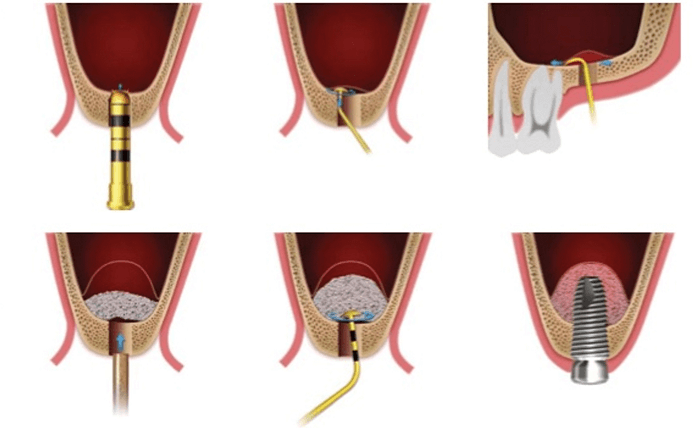
What Are the Steps in the Indirect Sinus Lift Procedure?
The Indirect Sinus Lifting procedure typically involves the following steps:
- Evaluation and treatment planning: Before the procedure, the dental professional will evaluate the patient’s dental and medical history, take digital x-rays or a CBCT scan of the affected area, and determine if Indirect Sinus Lifting is a suitable treatment option. Please review these pre-operative instructions before your visit.
- Anesthesia: The patient is given local anesthesia to numb the area around the affected tooth or teeth.
- Creation of a small access hole: The dentist will make an incision in the gum and raise a gum flap. A small access hole is created in the crestal ridge of the upper jaw bone using a series of specialized dental drills.
- Elevation of the sinus membrane: The dental professional will then use specialized instruments to gently push the bone and sinus membrane upwards, creating a space for the bone graft material and/or dental implant.
- Placement of bone graft material or dental implant: Oftentimes, the dentist will be able to place a dental implant at the same time the Indirect Sinus Lift is performed. Bone graft material, typically allograft derived from human cadaver bone, may also be placed into the space created by the lifted sinus membrane. The bone graft material will eventually fuse with the patient’s own bone, creating a solid foundation for implant placement.
- Suturing: Once the bone graft material is placed, the access hole is sutured closed, and the patient will be given post-operative instructions for care.
- Follow-up appointments: Follow-up appointments are typically scheduled to monitor the healing process and determine if the patient is ready for implant placement.
Overall, the Indirect Sinus Lifting procedure is minimally invasive and can be completed in a single visit. Patients should follow all post-operative instructions provided by their dental professional to ensure proper healing and successful implant placement. If you have further questions about Indirect Sinus Lift, please contact us.
Can I Have Indirect Sinus Lift If I Am Pregnant?
Generally, it is not recommended to undergo Indirect Sinus Lifting procedures while pregnant. Pregnant women are at an increased risk of complications during any medical or dental procedures, including Indirect Sinus Lifting. Therefore, it is generally recommended to wait until after pregnancy to undergo Indirect Sinus Lifting procedures. Patients who are pregnant or suspect they may be pregnant should inform their dental professional prior to any dental procedures to ensure the safety of both the patient and the fetus. If you have further questions about Indirect Sinus Lift and pregnancy, please contact us.
How Long Does Indirect Sinus Lift Last?
Indirect Sinus Lifting is a procedure that provides a foundation for dental implant placement. With proper care, the graft can last a lifetime. Generally, dentists ask patients to wait 4 to 6 months of bone and gum healing before proceeding with the next stage in treatment, the dental implant placement. However, some patients may choose to wait longer. The duration of the preservation largely depends on the patient’s oral health, the bone graft material used, and the patient’s commitment to good oral hygiene. If you have further questions about Indirect Sinus Lifting, please contact us.
We also think you’ll like…
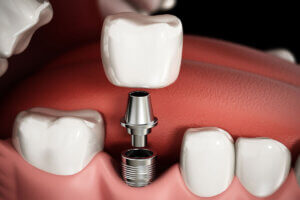
Fallen Out Dental Implant Crown
Fallen Out Dental Implant Crown What Is A Fallen Out Dental Implant Crown? Dental implant crowns are a popular and effective solution for replacing missing
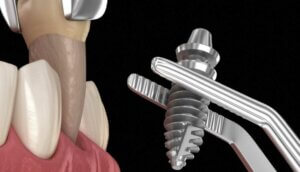
Alpha-Bio Tec Dental Implants
Alpha-Bio Tec Dental Implants What Are Alpha-Bio Tec Dental Implants? Alpha-Bio Tec is a dental implant company that specializes in providing innovative solutions for dental

Adin Dental Implants
Adin Dental Implants What Are Adin Dental Implants? Adin is a dental implant company that specializes in providing innovative solutions for dental implantology and oral

IDL Dental Implants
IDL Dental Implants What Are IDL Dental Implants? IDL is a dental implant company that specializes in providing innovative solutions for dental implantology and oral tissue
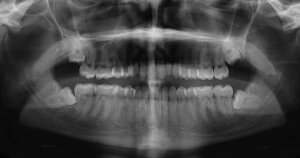
Wisdom Tooth Removal Consent Form
Wisdom Tooth Removal Consent Form There will be some pain, swelling and bleeding following a tooth extraction. This may require pain-relieving medication. Bleeding is usually
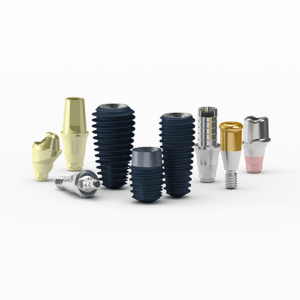
Megagen Dental Implants
Megagen Dental Implants What are Megagen Dental Implants? Megagen is a prominent player in the field of dental implantology, known for its innovative approach to

